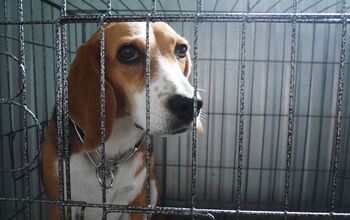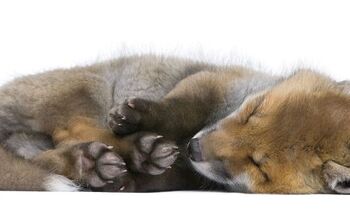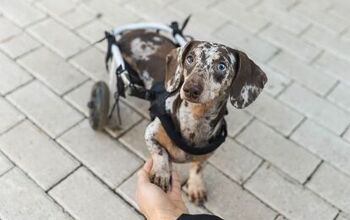Adoptable Dog of the Week- Mia

Sweet and friendly, this gal gets along with everyone she meets! Our Adoptable Dog of the Week is Mia, a 4 years old mixed breed from Fort Atkinson, Wisconsin. This pretty pooch is spayed, house trained, crate trained, and up to date on her vaccinations. Mia is great with other dogs and loves everyone around her, but needs a home without any cats in the family.
Mia was found as a stray in Texas but is now thriving in her foster home. A laid-back, kind-hearted pooch, Mia would do best in a family that has a calm lifestyle. She loves car rides, napping in her kennel, but most of all squeaky toys: she’s a pro at locating and removing the squeaker from the toy. It takes skill, y’all. She’s not an active pooch but will benefit from regular exercise as she has a few pounds to shed. Ideally, a daily walk or two around the block would keep her active and help her maintain optimal weight. Otherwise, Mia is an easy-going dog that will spend most of her time napping and playing, she’s not overly active or clingy so she’s great for multi-pet families.
In her foster home, she shared her pawrents with multiple dogs of all shapes and sizes and got along great with all of them so a canine companion would be great for her. However, she does show a little bit too much of an “interest” when it comes to cats, so it’s best if she is adopted into a feline-free household. She’s a sweet, loving pooch that will get along with most people she meets, so she will easily fit in most families. In case you’ve got room in your heart and your home for a loving little pooch like Mia, contact Paddy’s Paws for more information about the adoption process.

A proud mama to seven dogs and ten cats, Angela spends her days writing for her fellow pet parents and pampering her furballs, all of whom are rescues. When she's not gushing over her adorable cats or playing with her dogs, she can be found curled up with a good fantasy book.
More by Angela Vuckovic























